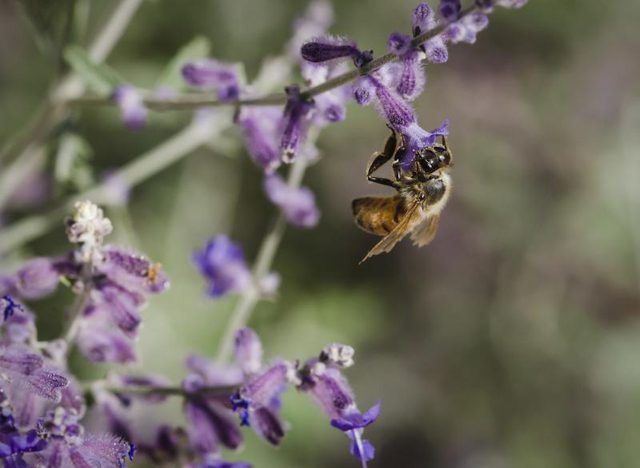Bulbs
Flower Basics
Flower Beds & Specialty Gardens
Flower Garden
Garden Furniture
Garden Gnomes
Garden Seeds
Garden Sheds
Garden Statues
Garden Tools & Supplies
Gardening Basics
Green & Organic
Groundcovers & Vines
Growing Annuals
Growing Basil
Growing Beans
Growing Berries
Growing Blueberries
Growing Cactus
Growing Corn
Growing Cotton
Growing Edibles
Growing Flowers
Growing Garlic
Growing Grapes
Growing Grass
Growing Herbs
Growing Jasmine
Growing Mint
Growing Mushrooms
Orchids
Growing Peanuts
Growing Perennials
Growing Plants
Growing Rosemary
Growing Roses
Growing Strawberries
Growing Sunflowers
Growing Thyme
Growing Tomatoes
Growing Tulips
Growing Vegetables
Herb Basics
Herb Garden
Indoor Growing
Landscaping Basics
Landscaping Patios
Landscaping Plants
Landscaping Shrubs
Landscaping Trees
Landscaping Walks & Pathways
Lawn Basics
Lawn Maintenance
Lawn Mowers
Lawn Ornaments
Lawn Planting
Lawn Tools
Outdoor Growing
Overall Landscape Planning
Pests, Weeds & Problems
Plant Basics
Rock Garden
Rose Garden
Shrubs
Soil
Specialty Gardens
Trees
Vegetable Garden
Yard Maintenance
Desert Sage Plants
Desert Sage Plants. Native to the Great Basin and Mojave Deserts of the American Southwest, desert sage (Salvia dorrii) is a small shrub with showy blue flowers and purple bracts. It grows in U.S. Department of Agriculture plant hardiness zones 5 through 9. This low-growing shrub is also called desert purple sage, purple sage, grayball sage, Dorr...
Native to the Great Basin and Mojave Deserts of the American Southwest, desert sage (Salvia dorrii) is a small shrub with showy blue flowers and purple bracts. It grows in U.S. Department of Agriculture plant hardiness zones 5 through 9. This low-growing shrub is also called desert purple sage, purple sage, grayball sage, Dorr sage and tobacco sage. If you're a fan of Zane Grey's Western novels, it's thought that desert sage is the plant referred to in his book, "Riders of the Purple Sage."
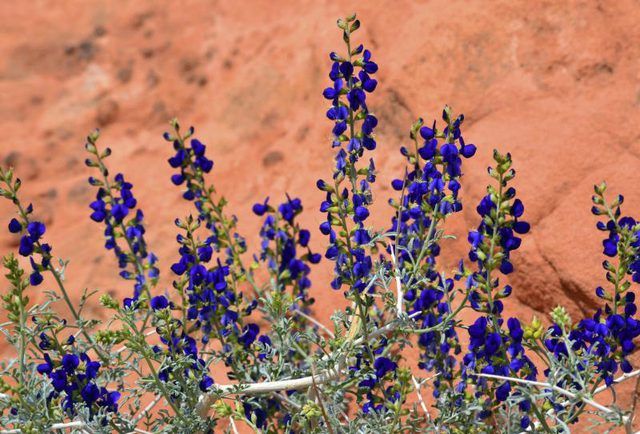
Desert sage makes a tidy, mounded shrub that is 8 to 32 inches tall and 24 to 36 inches wide. It is densely branched and doesn't need pruning to maintain its shape. The woody stems and branches have rough, grayish bark that peels from the surface. Desert sage needs full sun, but in hottest desert areas benefits from afternoon shade. A well-draining soil is essential.
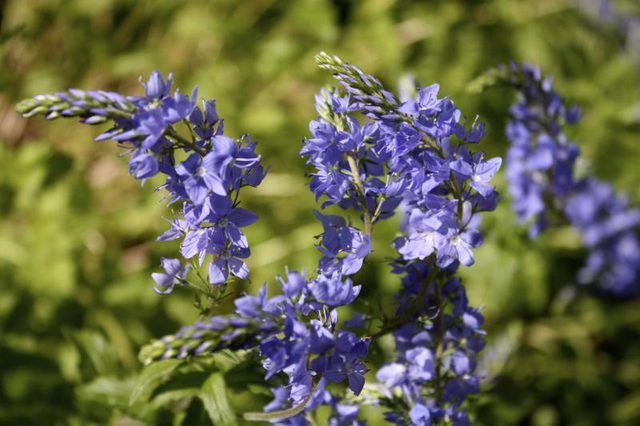
Plant desert sage where you can brush by the foliage to release the powerful aromatic fragrance in the leaves. The oval leaves are green but look silvery-gray because of a coating of fine hairs. The leaf color makes a good foil for the bright spring flowers. The shrub is semi-evergreen, retaining its leaves in mild winter climates but shedding some leaves in colder weather. Desert sage is resistant to browsing by rabbits and deer.
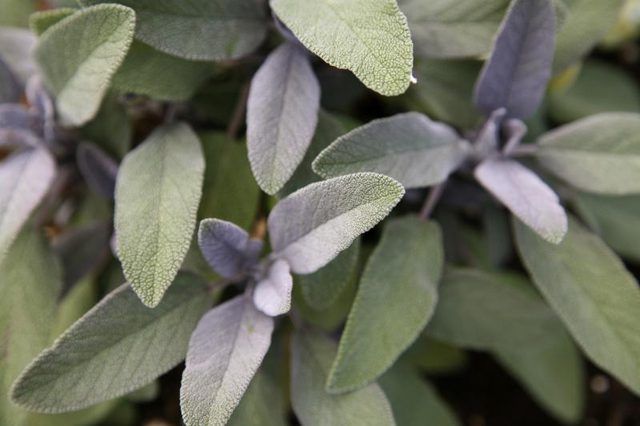
The blue- to violet-blue tubular flowers form in whorls along the stems. Rosy-purple bracts complement the flower color well and keep their shape and color after the flowers have faded. The flower clusters provide abundant nectar for bees, butterflies, hummingbirds and moths. The ovary at the base of each flower produces a fruit containing four seeds. You can remove the flower heads when the bracts begin to fade for a more tidy appearance. To grow more plants from seed, provide them with up to six weeks of cold-moist stratification for better germination. Put the seeds in moist paper towels and seal them in a plastic bag in the refrigerator.
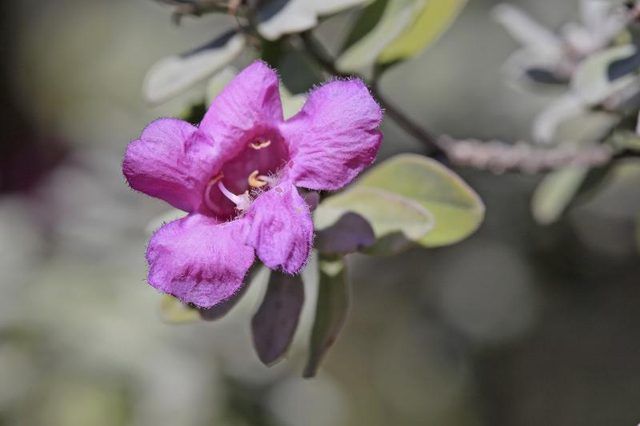
Useful in low-water landscapes, desert sage is drought-tolerant and needs little maintenance once established. The shrubs make borders or edgings, and they're good additions to butterfly and hummingbird gardens. There's some evidence that they don't tolerate sprinkler irrigation well. Desert sage is suitable for containers, which give the plant the excellent drainage it needs. Always use a container with drainage holes. Another option is to combine it with drought-tolerant perennials that have similar cultural requirements.
